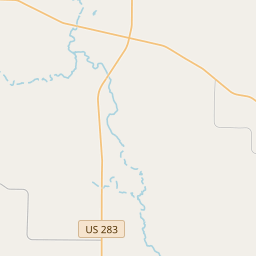Old Cottonwood Cemetery







OLD COTTONWOOD CEMETERY
FOR HIS MILITARY SERVICE WITH THE REPUBLIC OF TEXAS, GEORGE WASHINGTON GLASSCOCK, SR. (1810-68) RECEIVED A LAND GRANT INCORPORATING THE FUTURE SETTLEMENT OF COTTONWOOD. HIS WILL CONVEYED THIS LAND TO HIS DAUGHTER, SARAH JANE GLASSCOCK HALL, WHOSE HUSBAND, PHIDELLO WILLIAM HALL, WAS A TEXAS LEGISLATOR (1870-74). IN 1875, J. W. LOVE VISITED COTTONWOOD SPRINGS NEAR THE HEADWATERS OF GREEN BRIAR CREEK AND HOMESTEADED HERE. THE LAND WAS WELL SUITED FOR FARMING, AND THE COMMUNITY OF COTTONWOOD SOON BOASTED SEVERAL BUSINESSES, CHURCHES, A CHRISTIAN ACADEMY, A POST OFFICE, AND TWO NEWSPAPERS.
IN 1884, SARAH JANE AND P. W. HALL DONATED LAND FOR THE COTTONWOOD CEMETERY, AS WELL AS LAND FOR UNION BAPTIST AND METHODIST CHURCHES. THE BURIAL GROUND WAS ALREADY IN USE, WITH THE FIRST KNOWN GRAVES INCLUDING INFANTS DATING FROM 1877. COTTONWOOD WAS NOTED FOR FRONTIER VIOLENCE; FRIENDS GEORGE FRANKS AND TOM JONES WHO KILLED EACH OTHER IN DEC. 1882 ARE BURIED IN A COMMON GRAVE. P. W. HALL DIED IN 1888 AND IS BURIED HERE; SARAH JANE HALL IS BELIEVED TO BE BURIED HERE TOO BUT HER GRAVE HAS NOT BEEN IDENTIFIED. PROF. J. H. YONLEY, FOUNDER OF COTTONWOOD’S YONLEY POLYTECHNIC INSTITUTE, IS ALSO INTERRED HERE. THE CEMETERY INCLUDES GRAVES OF VETERANS DATING FROM THE TEXAS WAR FOR INDEPENDENCE. DROUGHTS, LACK OF RAIL TRANSPORTATION, AND A RETURN TO RANCHING LED TO A POPULATION DECLINE IN COTTONWOOD. THE CEMETERY CONTAINS SEVERAL HUNDRED GRAVES AND IS A CHRONICLE OF GENERATIONS OF FAMILIES WHO CONTRIBUTED TO THE PROGRESS OF THE COMMUNITY.
HISTORIC TEXAS CEMETERY – 2003
As one of the most visible programs of the Texas Historical Commission (THC), historical markers commemorate diverse topics in Texas history, including: the history and architecture of houses, commercial and public buildings, religious congregations, and military sites; events that changed the course of local and state history; and individuals who have made lasting contributions to the state, community organizations, and businesses.
The first oil well in the United States was drilled in Texas in 1859. The discovery of oil transformed the economy of the state and helped to make Texas one of the wealthiest states in the nation.
In 1858, the Texas Legislature officially established Callahan County, naming it after James Hughes Callahan, a ranger and soldier in the Texas Revolution. The county's early economy relied heavily on agriculture, with cotton being the main cash crop and cattle ranching also playing a significant role.
During the Civil War, like many regions of Texas, Callahan County experienced unrest and hardship. After the war, however, the county quickly recovered, and the construction of the Texas and Pacific Railway in the late 19th century further fueled growth and development. The railroad brought new settlers, boosted trade, and led to the establishment of towns like Baird, Cross Plains, and Clyde.
Throughout the 20th century, Callahan County continued to evolve and diversify its economy. Oil was discovered in the area in the 1920s, leading to the establishment of oilfields and the growth of the petroleum industry. Agriculture remained important, with crops like wheat, milo, and sorghum becoming significant, and ranching continued to thrive.
Today, Callahan County is a vibrant community that honors its history while embracing modern advancements. Its rich agricultural heritage, coupled with a growing oil and gas industry, makes this county a resilient and prosperous area within the state of Texas.
Callahan County Timeline
This timeline provides a glimpse into the major events and milestones that have shaped the history of Callahan County, Texas.
- 1854 - Callahan County is created and named after James Hughes Callahan, a Texas Ranger and legislator.
- Late 1850s - Settlers begin to arrive in the area, primarily from the southern United States.
- 1861-1865 - Callahan County, like the rest of Texas, is greatly impacted by the American Civil War.
- 1872 - Baird is established as the county seat.
- Early 1880s - The Texas & Pacific Railway is built through Callahan County, boosting economic growth.
- Early 1900s - Agriculture, particularly cotton farming, becomes a major industry in the county.
- 1923-1924 - Oil is discovered in Callahan County, leading to a boom in production and economic development.
- 1940s - Callahan County experiences a decline in population due to the effects of World War II.
- 1980s-1990s - The economy diversifies with the growth of manufacturing and retail sectors.
- 2000s - Callahan County continues to be primarily rural, with agriculture and oil production playing significant roles in the local economy.